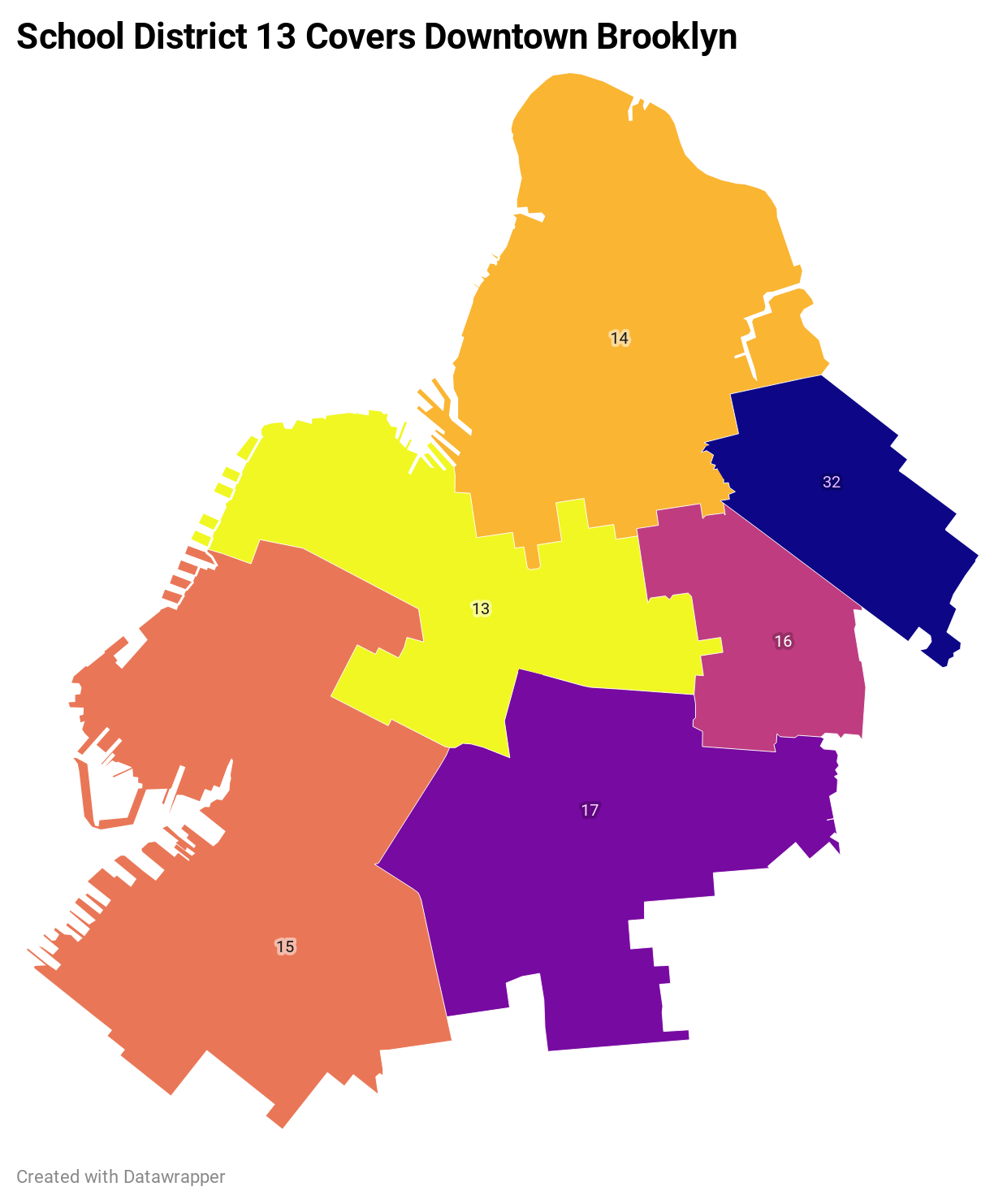District 13 Aims For More Integrated Middle Schools


By Christina Veiga, Chalkbeat New York
Middle schools in a diverse corner of Brooklyn will implement admissions changes this year in hopes of creating more integrated classrooms.
At all 10 middle schools in District 13, students who come from low-income families or live in temporary housing will be given an admissions preference that applies to 57% of each school’s seats. That matches the average percentage of those students across the district, according to education department officials.
Since race and economic status are often intertwined, it’s possible the admissions preference leads to diversity when it comes to both race and income levels.
The move comes amid a dramatically changed landscape for this year’s middle school application process. Mayor Bill de Blasio eliminated competitive admissions “screens” across the five boroughs due to the coronavirus pandemic’s toll on children and because typical metrics selective schools use — state tests scores, grades and attendance — were not in play for last spring. Black and Latino students are underrepresented at screened schools, and de Blasio said ending selective admissions would bolster diversity in New York City, home to one of the nation’s most segregated school systems.
But integration advocates have pointed out that eliminating screens alone is not likely to shift demographics. Parents still can decide where to apply to schools, and school choice rarely leads to integration. That is why District 13’s move is noteworthy: A lottery system that also reserves seats for high needs students could do even more to integrate classrooms in a district that spans the affluent neighborhoods of Brooklyn Heights and Dumbo as well as gentrifying areas including Clinton Hill and Bedford-Stuyvesant.
“We know that offering greater opportunity and access for all students makes our schools stronger,” District 13 Superintendent Kamar Samuels said in a statement. “This initiative will help ensure our classrooms better reflect the rich diversity of our community and bring us one step closer to a fair admissions process.”
In District 13, white and more affluent families have flocked to just a handful of schools, including Arts and Letters 305 United, a joint elementary and middle school where 42% of students are white and only 22% come from low-income families. (The school was recently merged, a move that could help spur more diversity there.) Others have fled to charters like Community Roots and Brooklyn Prospect for middle school. At Satellite East Middle School, meanwhile, virtually all of the students are Black, Latino, or Asian, and 95% are from low-income families.
The number of white students in District 13 has ticked up in recent years, signaling potential changes on the horizon for the area’s schools. In other gentrifying parts of the city, schools have put admissions preferences in place to help preserve access for families who have historically relied on their local schools.
At The Urban Assembly Unison School, Principal Emily Paige said she has seen growing interest from families of different backgrounds, and Unison has intentionally worked with local elementary schools to create a more diverse pipeline of applicants. But she also wants to make sure that changing demographics don’t result in some communities getting pushed out.
“We don’t want to see that,” she said. She highlighted her school’s motto, “Where everyone has a seat at the table.”
“It feels amazing to be, now, in a district where we can say in this coming year every child will have a seat at the table across all of our schools,” Paige said.
New York City is home to the greatest share of schools that use selective admissions, or “screens,” to filter out students. Roughly 40% of middle schools use academic records, such as report card grades or test scores, to admit students. In District 13, all but two middle schools have relied on academic screens in previous years.
To get into many competitive middle schools, 10-year-olds and their families dive into a time-consuming, convoluted application process that involves touring and ranking schools — and, in previous years, submitting portfolios, taking exams, or doing auditions. The process favors families with the time and savvy to navigate the system and is blamed for driving segregation.
The city positioned its removal of screens as a one-year pause, and it’s not clear whether District 13 will continue the practice after this year. But there is precedent forgoing screening altogether. Neighboring District 15 moved to a lottery system for last year’s incoming sixth graders. Admissions figures from that inaugural class showed many schools in that district, which includes well-heeled areas like Carroll Gardens and Park Slope, as well as more working-class neighborhoods like Red Hook and Sunset Park, are making progress towards a more diverse student body.
The education department has encouraged individual schools to pursue diversity plans on their own, but integration advocates have argued that school-level approaches won’t change much. Paige said that District 13 parent and school leaders have been working on diversity issues for years, including looking at resource inequities with local PTAs, district training for teachers, and efforts at the local Community Education Council to help schools recruit.
“The power here is doing it together,” she said.
Chalkbeat is a nonprofit news site covering educational change in public schools.



